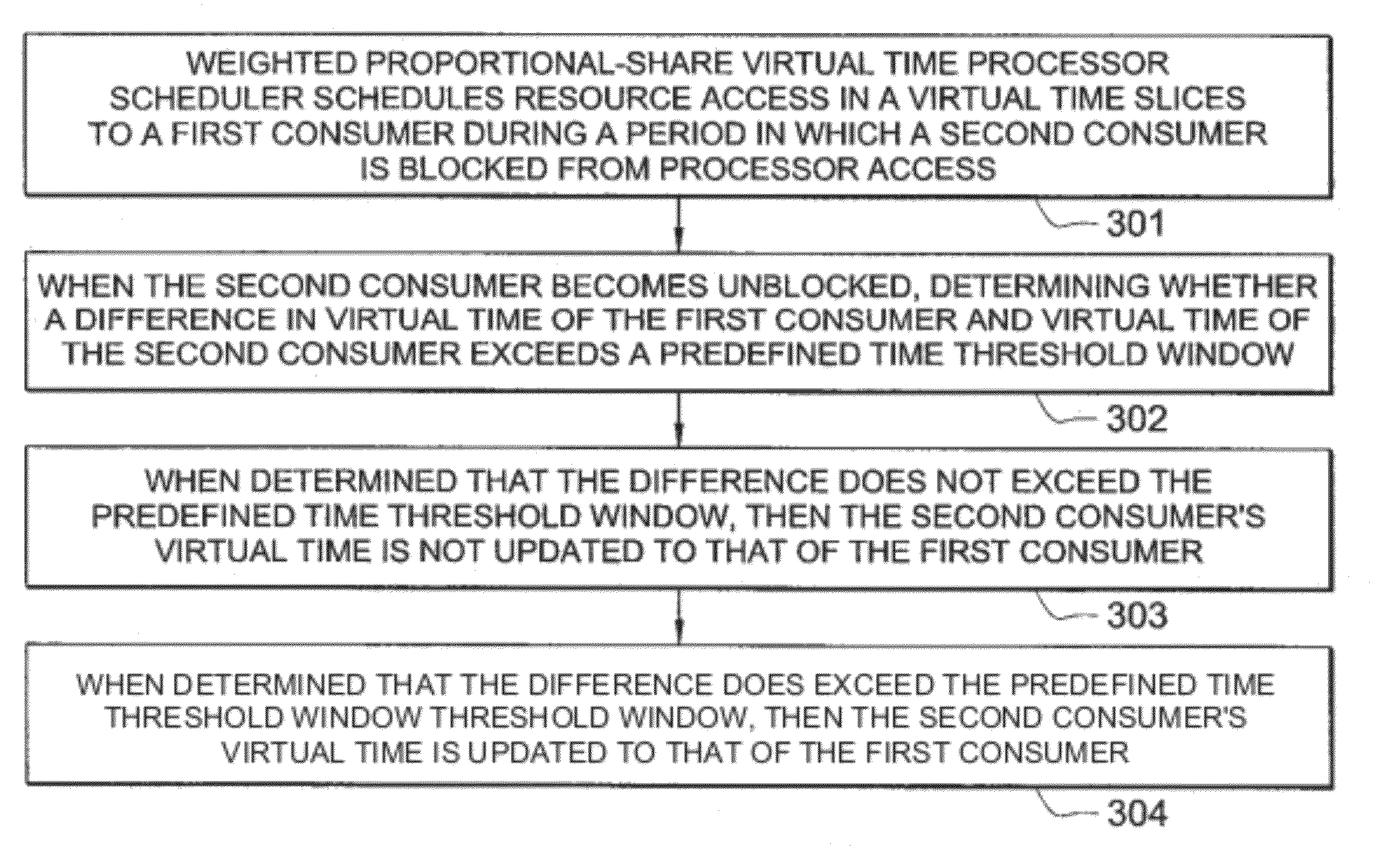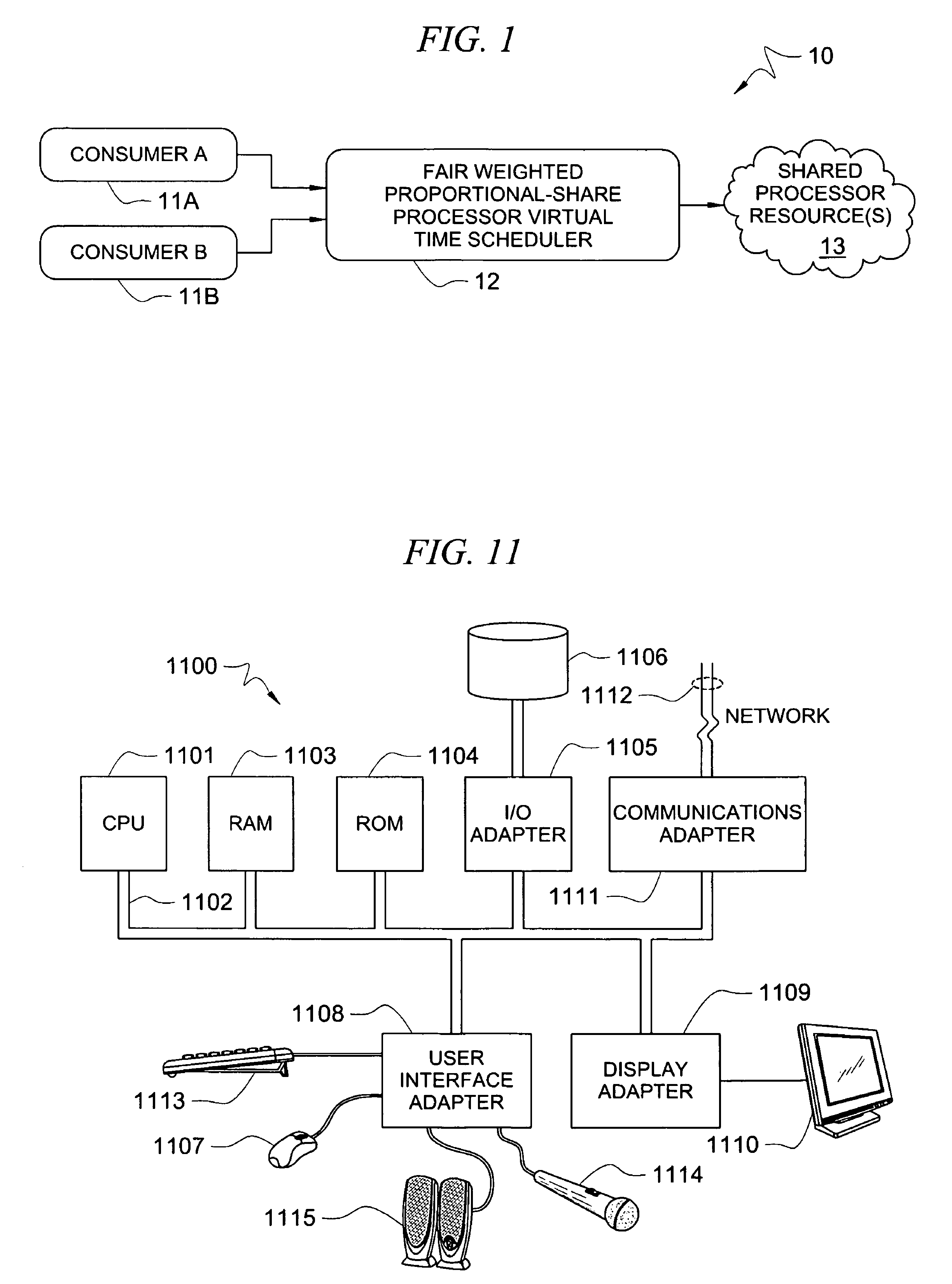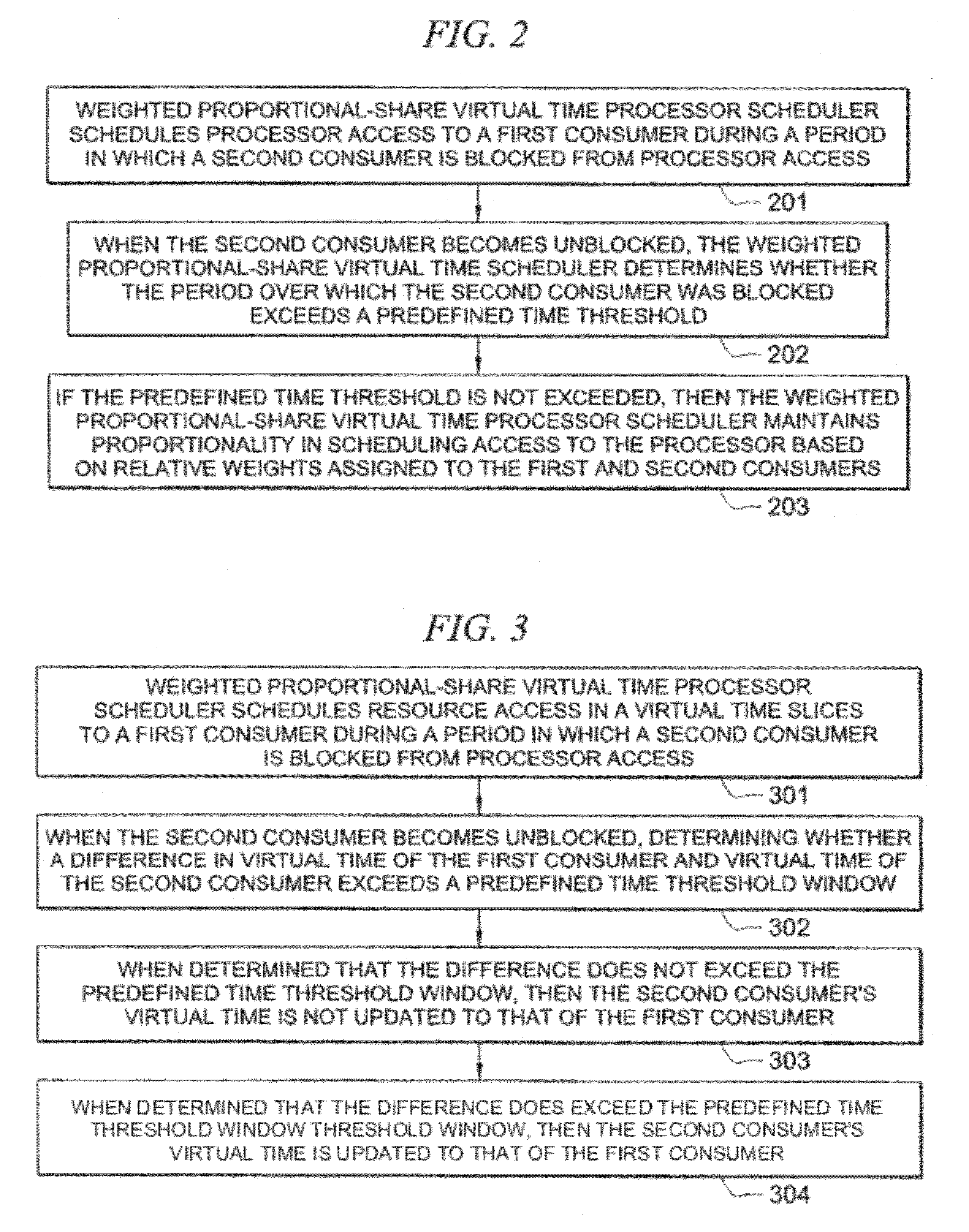Fair weighted proportional-share virtual time scheduler
a proportional-share, scheduler technology, applied in the field of resource scheduling, can solve the problems of reducing the allocation of processors' capacity to such workloads, leaving the remaining consumers with insufficient capacity to support their respective workloads, and generally consuming capacity for servicing the consumer's workload
- Summary
- Abstract
- Description
- Claims
- Application Information
AI Technical Summary
Benefits of technology
Problems solved by technology
Method used
Image
Examples
Embodiment Construction
[0022]FIG. 1 shows a block diagram of an exemplary system 10 according to one embodiment of the present invention. System 10 comprises a fair weighted proportional-share virtual time processor scheduler 12, embodiments of which are described further herein. Scheduler 12 schedules access to shared processor resource(s) 13 for competing consumers 11A and 11B. Shared processor resource(s) 13 may be any type of resource(s) for processing a consumer's workload, such as a central processing unit (CPU). Thus, as used herein, “processor resource” or simply “processor” each refers to any type of processing resource, including without limitation one or more CPUs, microprocessors, and / or other logic for processing instructions for servicing a consumers workload. Such shared processor resource(s) 13 have limited capacity, and scheduler 12 thus schedules access to such limited capacity by the consumers 11A-11B.
[0023]Thus, consumers 11A-11B may share utilization of the processor resource(s) 13 fo...
PUM
 Login to View More
Login to View More Abstract
Description
Claims
Application Information
 Login to View More
Login to View More - R&D
- Intellectual Property
- Life Sciences
- Materials
- Tech Scout
- Unparalleled Data Quality
- Higher Quality Content
- 60% Fewer Hallucinations
Browse by: Latest US Patents, China's latest patents, Technical Efficacy Thesaurus, Application Domain, Technology Topic, Popular Technical Reports.
© 2025 PatSnap. All rights reserved.Legal|Privacy policy|Modern Slavery Act Transparency Statement|Sitemap|About US| Contact US: help@patsnap.com



